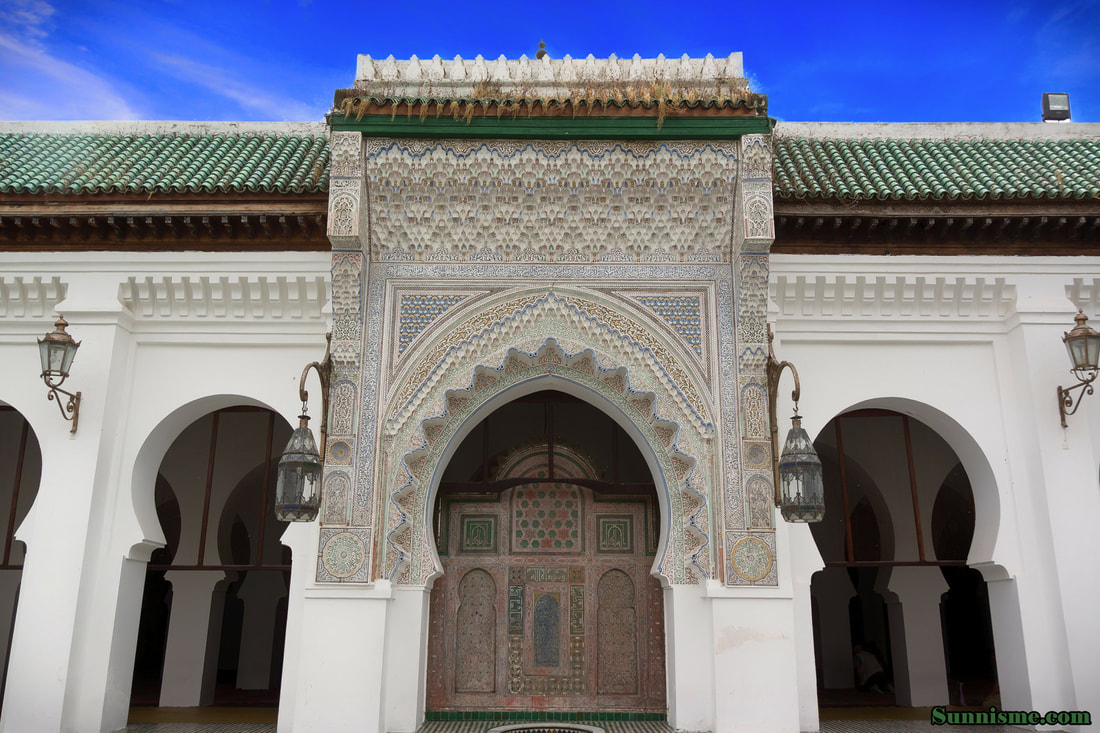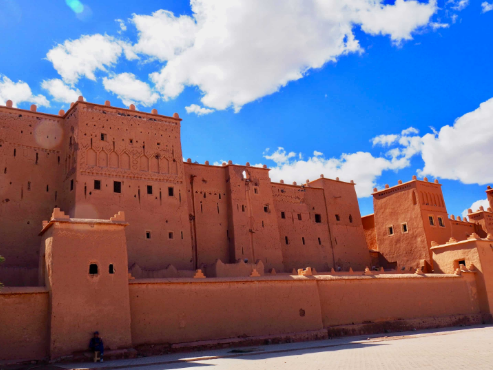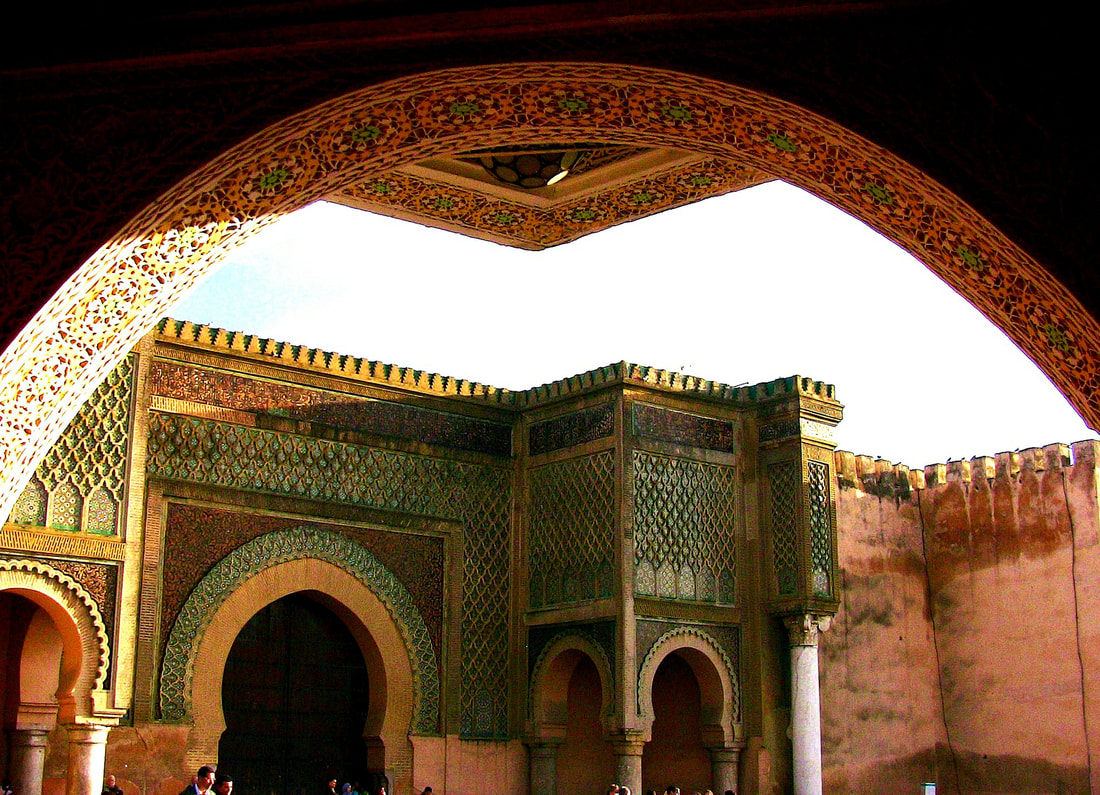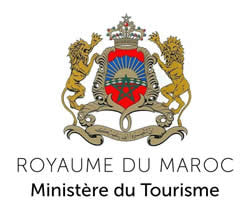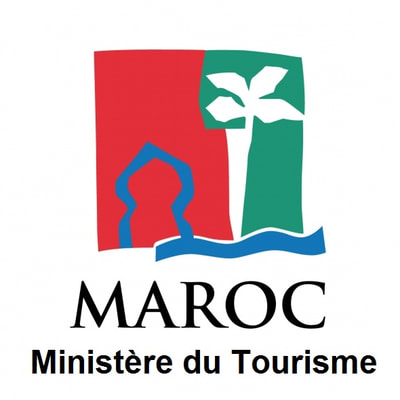The following programs are for lovers of architecture and history, possible to make any changes according to our customers needs.
Moroccan Architect discovery 10 Days |
Fortified Kasbahs and Palaces 12 Days |
Berber civilizations architectural heritage |
Moroccan architecture presents an architectural diversity that has its roots in Hispano-Moorish art. It covers the forms taken by the Islamic art in the Iberian Peninsula between the eighth and fourteenth century, under the reign of the Umayyad caliphs of Syria, then under the rule of the Berber civilizations Almoravids and Almohads.
Morocco is considered, as regards its architectural heritage, as being one of the richest in the region. Indeed, this variety lies in the multitude of influences that the country has known throughout history. Thus, each region is characterized by its own signature. And we would not be surprised if you have a crush on its riads and kasbahs!
Everyone agrees that Morocco is the crossroads of the Arab East and the Western Mediterranean, represented by Andalusia and that the different artistic forms of Arab-Muslim art find their full development in traditional architecture. Moroccan. Indeed, architecture allows artists and craftsmen to create magnificent masterpieces. If the models of the city tend to invade the architecture of the countryside, the rural world has an artistic expression of its own (blue houses of Chefchaouen).
The architecture is refined and very ornamental, it first characterizes the art of Morocco. In the imperial cities, it is also a reflection of a history rich in events. The world of the arts contributes to the knowledge of Moroccan artistic history. Behind the fortifications of Taroudant, Meknes, Fez and Marrakech, Moroccan art and architecture were built through a succession of rivalries and conflicts in the medinas and souks, in the casbahs, the mosques and behind the walls. heavy residential doors of the rulers.
The basic characteristics of riads are common to several cities of the Arab-Muslim world. The structure is almost the same: an interior courtyard, often surrounded by a garden, which is the heart of the building. It is around this space that articulates the different pieces that, most of the time, do not communicate with each other. Even the windows overlook this courtyard, leaving no contact with the outside, and this for several reasons. Security, discretion, calm, but also protection against external dust. This is the reason why riads hide their charms very well: in passing, nobody can have idea of what is really hiding inside. The number of rooms also varies depending on the size of the house. Regarding the decoration, it usually consists of zellige (ceramic with geometric patterns multicolored) or in plaster sculptures.
Morocco is considered, as regards its architectural heritage, as being one of the richest in the region. Indeed, this variety lies in the multitude of influences that the country has known throughout history. Thus, each region is characterized by its own signature. And we would not be surprised if you have a crush on its riads and kasbahs!
Everyone agrees that Morocco is the crossroads of the Arab East and the Western Mediterranean, represented by Andalusia and that the different artistic forms of Arab-Muslim art find their full development in traditional architecture. Moroccan. Indeed, architecture allows artists and craftsmen to create magnificent masterpieces. If the models of the city tend to invade the architecture of the countryside, the rural world has an artistic expression of its own (blue houses of Chefchaouen).
The architecture is refined and very ornamental, it first characterizes the art of Morocco. In the imperial cities, it is also a reflection of a history rich in events. The world of the arts contributes to the knowledge of Moroccan artistic history. Behind the fortifications of Taroudant, Meknes, Fez and Marrakech, Moroccan art and architecture were built through a succession of rivalries and conflicts in the medinas and souks, in the casbahs, the mosques and behind the walls. heavy residential doors of the rulers.
The basic characteristics of riads are common to several cities of the Arab-Muslim world. The structure is almost the same: an interior courtyard, often surrounded by a garden, which is the heart of the building. It is around this space that articulates the different pieces that, most of the time, do not communicate with each other. Even the windows overlook this courtyard, leaving no contact with the outside, and this for several reasons. Security, discretion, calm, but also protection against external dust. This is the reason why riads hide their charms very well: in passing, nobody can have idea of what is really hiding inside. The number of rooms also varies depending on the size of the house. Regarding the decoration, it usually consists of zellige (ceramic with geometric patterns multicolored) or in plaster sculptures.

